What's the meaning of the Triquetra »
Triquetra
This page is about the meaning, origin and characteristic of the symbol, emblem, seal, sign, logo or flag: Triquetra.
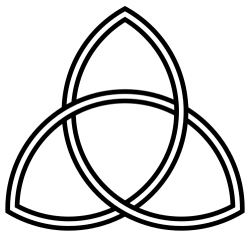
Triquetra originally meant "triangle" and was used to refer to various three-cornered shapes. Nowadays, it has come to refer exclusively to a particular more complicated shape formed of three vesicae piscis, sometimes with an added circle in or around it. Also known as a "trinity knot," the design is used as a religious symbol by both Christians and polytheists.
The triquetra has been found on runestones in Northern Europe and on early Germanic coins. It presumably had pagan religious meaning and it bears a resemblance to the Valknut, a symbol associated with Odin.
The triquetra is often found in Insular art, most notably metal work and in illuminated manuscripts like the Book of Kells. It is also found in similar artwork on Celtic crosses and slabs from the early Christian period. The fact that the triquetra rarely stood alone in medieval Celtic art has cast reasonable doubt on its use as a primary symbol of belief. In manuscripts it was used primarily as a space filler or ornament in much more complex compositions, and in knotwork panels it is a design motif integrated with other design elements. Celtic art lives on as both a living folk art tradition and through several revivals. This widely recognized knot has been used as a singular symbol for the past two centuries by Celtic Christians, Pagans and agnostics as a sign of special things and persons that are threefold.
The symbol has been used by Christians as a sign of the Blessed Trinity (Father, Son and Holy Spirit), especially since the Celtic Revival of the 19th century. When modern designers began to display the triquetra as a stand-alone design, it recalled the three-leafed shamrock which was similarly offered as a Trinity symbol by Saint Patrick. Some have also suggested that the triquetra has a similarity to the Christian Ιχθυς symbol. The triquetra has been used extensively on Christian sculpture, vestments, book arts and stained glass. It has been used on the title page and binding of some editions of the New King James Version.
A very common representation of the symbol is with a circle that goes through the three interconnected loops of the Triquetra. The circle emphasizes the unity of the whole combination of the three elements. It is also said to symbolize God's love around the Holy Trinity.
In contemporary Ireland, it is traditional for a man to give a loved one a trinket such as a necklace or ring signifying his affection towards her. The triquetra, also known as a "trinity knot," is believed to represent the three promises of a relationship such as to love, honour, and protect, and can be found as a design element on Claddaghs and other wedding or engagement rings.
It is difficult to date the exact origin of the Celtic triquetra, and whether it was first used in a Christian or pagan context; the distinctive interlace/knotwork artistic style did not fully develop until ca. the 7th century A.D., but the triquetra is the simplest possible knot. Modern Pagans use the triquetra to symbolize a variety of concepts and mythological figures.
Germanic Neopagan groups who use the triquetra to symbolize their faith generally believe it is originally of Norse and Germanic origins.
The symbol is also sometimes used by wiccans and some New Agers to symbolize the Triple Goddess, or as a protective symbol.
The triquetra is often used artistically as a design element when Celtic knotwork is used. Many who identify as Modern Celts may use the symbol to display an identification with Celtic culture, whether they live in the Celtic Nations or the diaspora.
- 4,768 Views
Graphical characteristics:
Symmetric, Closed shape, Monochrome, Contains curved lines, Has crossing lines.
Category: Celtic Symbols.
More symbols in Celtic Symbols:
The Celts (usually pronounced pron.: /ˈkɛlts/ but sometimes /ˈsɛlts/, see pronunciation of Celtic) or Kelts were an ethno-linguistic group of tribal societies in Iron Age and Medieval Europe who spok… read more »
Citation
Use the citation below to add this symbol to your bibliography:
Style:MLAChicagoAPA
"Triquetra." Symbols.com. STANDS4 LLC, 2025. Web. 23 Feb. 2025. <https://www.symbols.com/symbol/triquetra>.


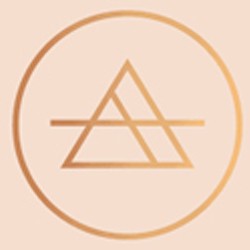
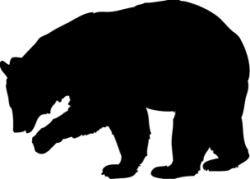

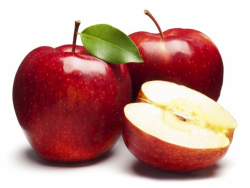
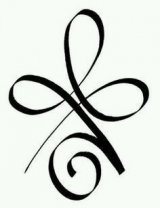
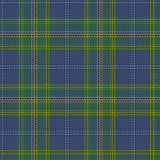




Have a discussion about Triquetra with the community:
Report Comment
We're doing our best to make sure our content is useful, accurate and safe.
If by any chance you spot an inappropriate comment while navigating through our website please use this form to let us know, and we'll take care of it shortly.
Attachment
You need to be logged in to favorite.
Log In